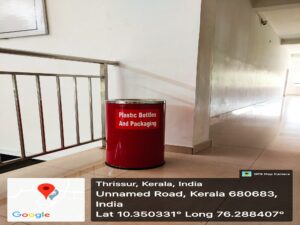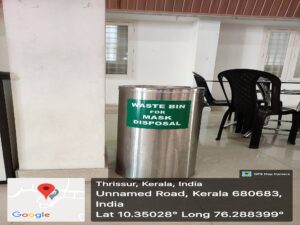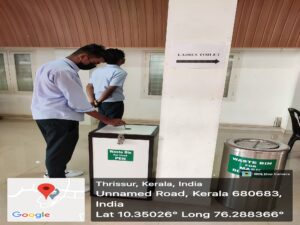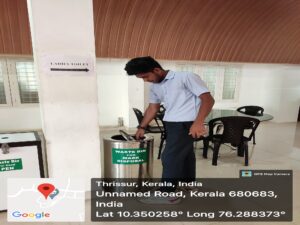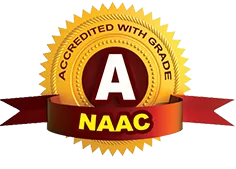Waste Management
Waste is generally termed as ‘a resource at the wrong place’. The college authorities are aware of the possible methods and have installed waste management measures like biogas systems. The waste clearance measures associated with different types of wastes are briefly given below. In this college normally three types of wastes are generated and we can divide the same as,
1. Bio degradable
2. Non bio degradable and
3. E-waste
1. BIODEGRADABLE WASTES
Biodegradable waste includes any organic matter in waste which can be broken down into carbon dioxide, water, methane or simple organic molecules by micro-organisms and other living things by composting, aerobic digestion, anaerobic digestion or similar processes also includes some inorganic materials which can be decomposed by bacteria. These materials are non-toxic to the environment and mainly include the natural substances like Plants and animals waste, even the dead plants and animals, fruits, paper, vegetables, etc. get convert into the simpler units, which further get into the soil and are used as manures, biogas, fertilizers, compost, etc. The biodegradable wastes are mainly from the college canteen and pushed it to the Biogas plant. The bio-slurry is used as manure to the plantation.
I. BIO GAS PLANT
Biogas is the mixture of gases produced by the breakdown of organic matter in the absence of oxygen (anaerobically), primarily consisting of methane and carbon dioxide. Biogas is a renewable energy source Biogas is produced by anaerobic digestion with methanogen or anaerobic organisms, which digest material inside a closed system, or fermentation of biodegradable materials. This closed system is called an anaerobic digester, bio digester or a bioreactor. Biogas is a renewable, as well as a clean, source of energy. Gas generated through bio digestion is nonpolluting; it actually reduces greenhouse emissions. No combustion takes place in the process, meaning there is zero emission of greenhouse gasses to the atmosphere; therefore, using gas from waste as a form of energy is actually a great way to combat global warming. Another biogas advantage is that, unlike other types of renewable energies, the process is natural, not requiring energy for the
generation process. In addition, the raw materials used in the production of biogas are renewable.
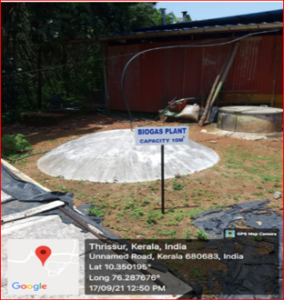
Bio gas plant reduces soil and water pollution. Consequently, yet another advantage of biogas is that biogas generation and its usage may reduce LPG consumption. Moreover, anaerobic digestion deactivates pathogens and parasites; thus, it’s also quite effective in reducing the incidence of waterborne diseases.
Bio gas generation produces organic fertiliser. The by-product of the biogas generation process is enriched organic (digestive), which is a perfect supplement to, or substitute for, chemical fertilizers. The fertilizer discharge from the digester can accelerate plant growth and resilience to diseases, whereas commercial fertilizers contain chemicals that have toxic effects and can cause food poisoning, among other things.
The biogas plant converts food wastes into methane gas and usable bio fertilizers which will used for plants. The methane gas from the biogas plant is used in the canteen for cooking purpose and for heating drinking water hot water. Approximately 140 kg of LPG /month is saved by using biogas plant. The bio maneuver from the biogas plant is used for gardening, agriculture and for trees. This biowasteis also act as best bio insecticide and thus the college avoided the usage environmentally toxic precipices for environment. Here college is using fixed dome permanent structure biogas plant of size 10 M3 for treating bio waste. The slurry coming from the plant is collected in drums and reused after diluting with water for agriculture and for gardens. The methane gas is used in the canteen for hot water generation which is used for drinking and tea making.
II. VERMI-COMPOST
It is the product of the decomposition process using various species of worms, usually red wigglers, white worms, and other earthworms, to create a mixture of decomposing vegetable or food waste, bedding materials, and vermicompost. Vermicompost contains water-soluble nutrients and is an excellent, nutrient-rich organic fertilizer and soil conditioner. It is used in farming and small scale sustainable, organic farming. The major source of raw material for Vermi-compost is the leaves in the college campus and also the wastes generated which are not fed into biogas such as Chicken bones etc.
Pipe Compost
Pipe composting is kind of vermicomposting often called as worm tube composting which is carries by using PVC tube. This is simpler method for treating wastes of lower volume.
Benefits of Vermi-compost
a. For Soil
Improves soil aeration
Enriches soil with micro-organisms (adding enzymes such as phosphatase and cellulase)
Microbial activity in worm castings is 10 to 20 times higher than in the soil and organic matter
that the worm ingests
Attracts deep-burrowing earthworms already present in the soil
Improves water holding capacity.
b. For Plant growth
Enhances germination, plant growth, and crop yield.
Improves root growth, Enriches soil with micro-organisms, adding plant hormones such
as auxins and gibberellic acid.
c. For Economic
Biowastes conversion reduces waste dumping in landfills.
Elimination of biowastes from the waste stream reduces contamination of other recyclables
collected in a single bin (a common problem in communities practicing is single-stream
recycling)
Creates low-skill jobs at local level.
Low capital investment and relatively simple technologies make vermicomposting practical for
less-developed agricultural regions.
d. For Environmental
Helps to close the “metabolic gap” through recycling waste on-site.
Large systems often use temperature control and mechanized harvesting, however other
equipment is relatively simple and does not wear out quickly
Production reduces greenhouse gas emissions such as methane and nitric oxide (produced in
landfills or incinerators when not composted).
SEGREGATION OF WASTE
Segregation of our waste is essential as the amount of waste being generated today caused immense problem. There are certain items are not BioDegradable but can be reused or recycled in fact it is believed that a larger portion of the waste can be recycled, a part of can be converted tocompost, and only a smaller portion of it is really waste that has no use and has to be discarded. The segregation waste at the first point important because we can reduce cost involved for the final segregation and treatment cost. At present college is segregation the waste in a crude manner which we can convert into scientific segregation system.
2. NON-BIODEGRADABLE WASTE
Materials that remain for a long time in the environment, without getting decompose by any natural agents, also causing harm to the environment are called non-biodegradable substances. These materials are metals, plastics, bottles, glass, poly bags, chemicals, batteries, etc.But as these are readily available, convenient to use, and are of low cost, the non-biodegradable substances are more often used. But instead of returning to the environment, they become solid waste which cannot be broken down and become hazardous to the health and the environment. Hence are regarded as toxic, pollution causing and are not considered as eco-friendly. Many measures are taken these days, concerning the use of non-biodegradable materials. The three ‘R’ concept which says Reduce-Recycle -Reuse is in trend, which explains the use of the non-biodegradable materials. As we already discuss that these substances do not decompose, or dissolve easily so can be recycled and reuse. And one can help in reducing this waste by instead of throwing the plastics and poly bags in the garbage; it can be put in the recycling bags to use again. Non-recyclable wastes are collected and burned once in a month using incinerator places inside the campus itself. The recyclable wastes are sorted out into categories and supplied it to the collecting units.
I. INCINERATOR
The objective of waste incineration, in common with most waste treatments, is to treat waste to reduce its volume and hazard, whilst capturing (and thus concentrating) or destroying potentially harmful substances. Incineration processes can also provide a means to enable
recovery of the energy, mineral and/or chemical content from waste. Basically, waste incineration is the oxidation of the combustible materials contained in the waste. Waste is generally a highly heterogeneous material, consisting essentially of organic substances, minerals,
metals and water. During incineration, flue-gases are created that will contain most of the available fuel energy as heat. The organic substances in the waste will burn when they have reached the necessary ignition temperature and come into contact with oxygen. The actual
combustion process takes place in the gas phase in fractions of seconds and simultaneously releases energy. Where the calorific value of the waste and oxygen supply is enough, this can lead to a thermal chain reaction and self-supporting combustion, i.e. there is no need for the addition of other fuels.
The incinerator is used for incinerating non-biodegradable waste such as paper, plastic, sanitary napkins etc. The ash generated are as for manoeuvre after mixing with cow dung for plants. The ash generated from plastic will be treated separately.The college has entered into an agreement with Northamps ENV Solutions approved service providers by Suchitwa Mission Govt of Kerala for for solid and liquid waste management.
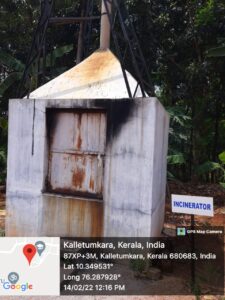
2. SEWAGE TREATMENT PLANT
Wastewater, treated or untreated, eventually ends up in rivers, streams, lakes, and oceans. Bore well or well water contaminated by sewage is a common cause of outbreaks of wastewater related diseases. Almost 80% of water supply flows back into the ecosystem as wastewater without any treatment. St. James college installed well defined good sewage treatment plant to treat the waste generation from the toilets, laboratories etc. The good water after the treatment is used for gardening. The college has entered into an agreement with Northamps ENV Solutions approved service providers by Suchitwa Mission Govt of Kerala for for solid and liquid waste management.
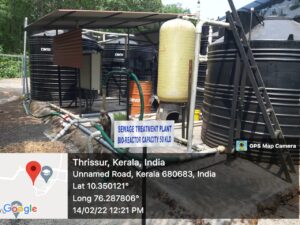
3. ELECTRONIC WASTE
Electronic waste or e-waste describes discarded electrical or electronic devices. E-waste or electronic waste is created when an electronic product is discarded after the end of its useful life. The rapid expansion of technology and the consumption driven society results in the creation of a very large amount of e-waste in every minute. Used electronics which are destined for refurbishment, reuse, resale, salvage recycling through material recovery, or disposal are also considered e-waste. Informal processing of e-waste in developing countries can lead to adverse human health effects and environment pollution. Certain components of some electronic products contain materials that render them hazardous, depending on their condition and density. Here in this college the electronic waste generation is minimal. The college has signed an agreement with Northamps ENV Solutions approved service providers by Suchitwa Mission Govt of Kerala for e-waste management.
FACILITIES PROVIDED BY COLLEGE FOR WASTE MANAGEMENT COLLECTION
- Toilets in every floor of all buildings separately for girls, and staff.
- There is separate toilet facility for department heads, staff rooms, administrative department
and common facility. - Every day cleaning and sanitisation is done at each and every toilet by cleaning personnel which
used to check by housekeeping supervisor. - Separate team is maintained by college for maintain the clean campus, removal of wastes from
pets, collection wastes from bins, which is supervised by maintenance supervisor. - Waste bins are provided in the college for collecting wastes in its first point and proper disposal
mechanism is provided in the college.
SEPERATE BINS FOR WASTE DISPOSAL
